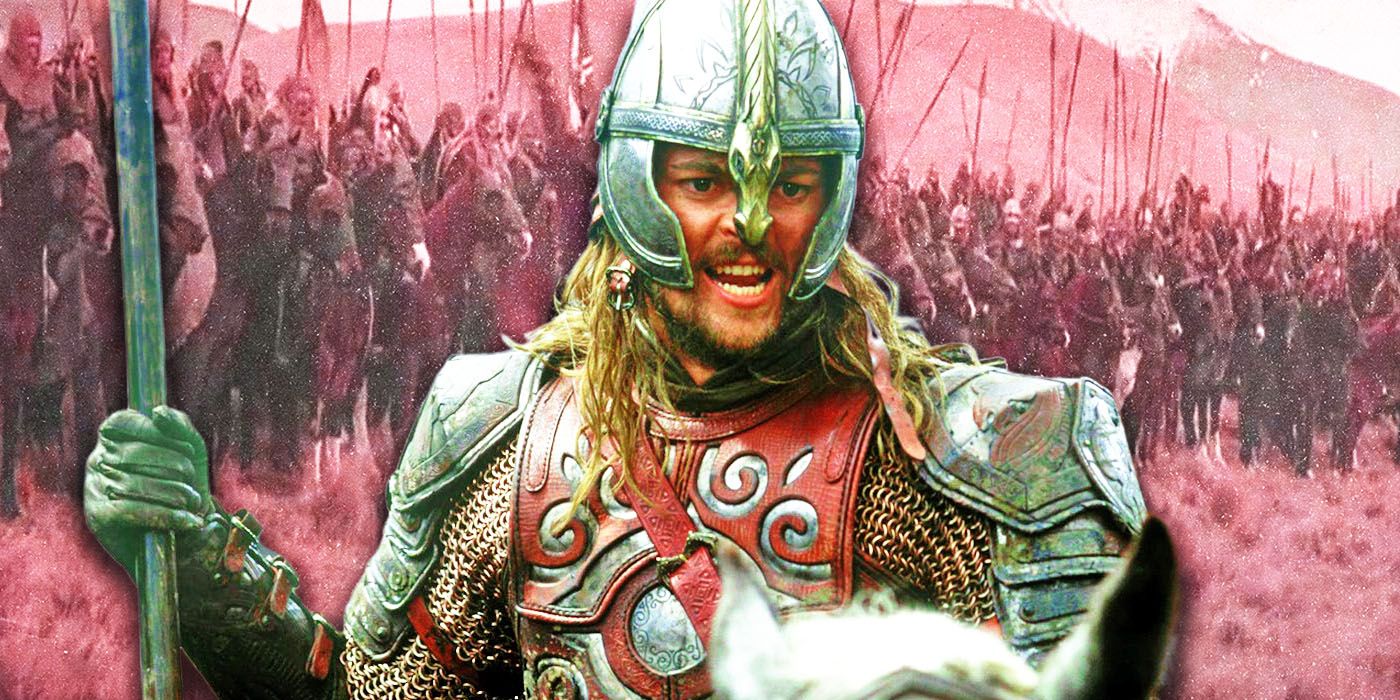Unveiling the Hidden Legacy: The Secret of Rohan Lurking in Plain Sight in The Lord of the Rings

Mounted combat. It's the rhythm of hoofbeats and the shimmer of metal on the battlefield that echoes through the pages of history and fantasy alike. In Tolkien's marvelous Middle-earth, few do it better than the **Rohirrim**—the cavalry of Rohan, masters of the equestrian dance of medieval warfare. And when Peter Jackson translated this epic saga onto the silver screen, especially in *The Return of the King*, the Rohirrim trotted in like a grand entrance at a gala, just in the nick of time to save Gondor from the clutches of defeat. Now, let’s be clear: this isn’t just your average cavalry charge. No, this is *the* cavalry charge. Led by the valiant King **Théoden**, they sliced through the Orcs like a hot knife through butter, all while we sat at the edge of our seats, popcorn in hand, hearts racing. A round of applause, please.
As the sun set over the besieged city of Minas Tirith, the Rohirrim charged into the fray at the **Battle of Pelennor Fields**. There they were—6,000 Riders, charging fiercely, though Théoden wished for more. In classic filmmaking style, Jackson’s team didn’t just mobilize a few enthusiastic extras; oh no, they had to create an entire army. Reports—contradictory as the plot twists in a soap opera—ranged from 150 to a whopping 500 extras who, through the magic of digital wizardry, transformed into the majestic 6,000 we saw on screen. Who knew a bit of digital duplicity could lead to such glory?
Now, before you start to imagine throngs of galloping actors in dazzling armor, let’s not forget the small detail of *horses*. Imagine trying to teach hundreds how to ride a horse without turning the shoot into a scene out of a slapstick comedy! Instead of ponying up for lessons—which are about as costly as they are time-consuming—the clever filmmakers decided on a more practical approach: they turned to equestrians already snugly ensconced in the saddle. They sent out a call across New Zealand, and like moths to a flame, horse owners came trotting in, full of hopes of becoming one with the Rohirrim.
But wait, there’s a twist! As fate would have it, the bulk of those brave riders turned out to be women. And while it might be true that women can ride just as well as men, Rohan had its cultural quirks, and female soldiers weren’t part of the narrative yet. Enter **Wētā Workshop** with their artistry and a clever solution: fake beards. Yes, dear reader, in a delightful bit of irony, some of the film’s backdrop heroes were effectively unrecognizable thanks to a sprinkle of makeup magic. A dab here, a tug there, and with the helmets masking their identities, they blended seamlessly into the heroic lore. It’s a classic case of film magic: few noticed, but I can’t help but chuckle at how many first-time viewers might’ve assumed it was just a bunch of ruggedly handsome men on horses, when in fact it was quite the opposite!
Speaking of seamless, let’s not overlook the subtle makeup work that quietly supported the film's grandeur. You might have noticed the pointed ears of Elves or the extravagant feet of hobbits, but behind the scenes, makeup artists were buzzing like bees, delivering wigs, facial hair, and other necessary cosmetics to fairly everyone on set. After all, a good look is half the battle, and the trilogy snagged some prestigious accolades—two Academy Awards for Best Makeup, no less! So next time you bask in Rohan's glory, remember: it wasn't just swordplay and valor; it was beauty, hard work, and a smidge of deception.
And how deliciously ironic is it that amidst all this, *Éowyn* encapsulates the spirit of rebellion and valor? Desiring to fight and protect her homeland while being ensnared by tradition and overprotective family members, she eventually donned her own disguise as a male warrior, riding into the fray under the guise of *Dernhelm*. Her confrontation with the Witch-king—“No man can kill me!” he boasts, only for her to dramatically unveil, “I am no man!”—still sends shivers down my spine. Talk about a twist of fate! If you happen to be gearing up for a new *Lord of the Rings* animated venture titled *The War of the Rohirrim*, I dare say we’re in for more tales of powerful women and breaking barriers. After all, Héra is stepping into a legacy that's carved in valor and audacity.
Creating *The Lord of the Rings* trilogy was no small feat—more like an undertaking that makes the Tower of Isengard look like a weekend project. With an estimate of 20,000 extras in the films, and one in every 160 New Zealanders gracing its glorious frames, how could one ever encapsulate such vibrant life? Each extra, from those without prior acting experience to those simply embodying the right height, contributed to a living tapestry of Middle-earth. Even the chilling chants of the Uruk-hai were recorded amid the raucous cheers of cricket fans. It’s almost poetic, really. The success of *The Lord of the Rings* is not the tale of one, but a symphony composed of countless talents who dared to dream big and gallop faithfully into the cinematic sunset.

